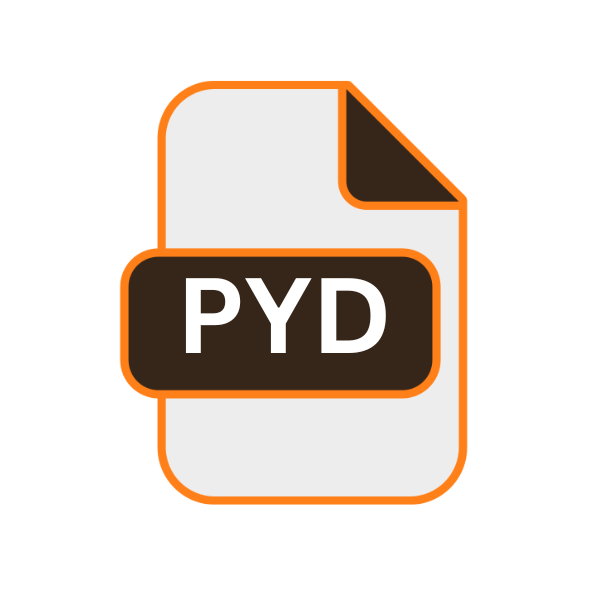.PYD File Extension

Python Dynamic Module
| Developer | N/A |
| Popularity | |
| Category | Developer Files |
| Format | .PYD |
| Cross Platform | Update Soon |
What is an PYD file?
.PYD files are modules used in Python programming language, specifically designed for dynamic linking and loading.
They play a crucial role in extending Python’s capabilities by enabling developers to integrate compiled C/C++ code into Python applications seamlessly.
This article explores the origins, structure, advantages, disadvantages, and methods to handle .PYD files across various operating systems.
More Information.
.PYD files were introduced alongside the rise of Python as a versatile programming language capable of both rapid development and high performance.
They enabled developers to optimize critical sections of code without sacrificing Python’s ease of use and platform independence.
Initially used primarily in Windows environments due to the dynamic linking capabilities inherent in Windows DLLs, .PYD files later found adaptation in various other Python implementations and operating systems.
Origin Of This File.
The concept of .PYD files originated from the need to enhance Python’s performance and functionality by allowing developers to write high-performance code in languages like C or C++ and seamlessly integrate it into Python applications.
Initially introduced to cater to Windows-based Python environments, .PYD files provided a means to extend Python’s standard libraries with custom, high-performance modules.
File Structure Technical Specification.
.PYD files are essentially dynamic link libraries (DLLs) compiled from C or C++ source code using tools like Microsoft Visual Studio or other compatible compilers.
They follow the DLL file structure, containing compiled machine code that Python can dynamically load and execute. The technical specifications include:
- Binary Format: Compiled machine code compatible with the target architecture.
- Dependencies: Can include other DLLs or libraries required by the module.
- Python Compatibility: Must adhere to Python’s C API for seamless integration and interaction with Python scripts.
How to Convert the File?
Converting a .PYD file involves compiling C/C++ source code into a format that Python can load as a dynamic module. Here’s a simplified guide from a non-technical perspective:
1. Set Up Your Development Environment:
Ensure you have the necessary tools installed:
- Windows: Use tools like Visual Studio or MinGW.
- Linux: Utilize GCC compiler typically available through package managers.
- macOS: Install Xcode, which includes the Clang compiler.
2. Prepare Your Source Code:
Write or obtain the C/C++ source code that you want to convert into a .PYD file. This code should implement the functionality you wish to extend or integrate with Python.
3. Compile the Source Code:
Use your development environment to compile the source code into a .PYD file:
- Windows: Configure your project to generate a dynamic link library (DLL) or use tools like Visual Studio to compile your code into a
.PYDfile. - Linux: Compile the source code into a shared object (.so) file using GCC.
- macOS: Compile the source code into a dynamic library (.dylib) using Xcode or Clang.
4. Place the Generated File:
Once compiled, place the generated .PYD (or equivalent) file in a location where Python can access it. This is typically within a directory recognized by Python’s import system or within your project directory.
5. Integration and Testing:
Import and utilize your .PYD module within your Python scripts. Ensure it functions correctly and integrates seamlessly with your Python application.
6. Consider Platform-Specific Requirements:
Be mindful of platform-specific nuances during compilation and deployment. Ensure any dependencies required by your .PYD module are also accessible and correctly linked.
7. Debugging and Optimization:
Use debugging tools provided by your development environment to troubleshoot any issues encountered during compilation or runtime.
Optimize your C/C++ code for performance if necessary to leverage the advantages of compiled languages within Python applications.
Advantages And Disadvantages.
Advantage:
- Performance: .PYD files allow developers to write performance-critical parts of their Python applications in C or C++, leveraging the speed advantages of compiled languages.
- Integration: Seamless integration with Python scripts and standard libraries, extending Python’s functionality without compromising its syntax or ease of use.
- Cross-Platform: While primarily used on Windows, .PYD files can be adapted for use in other operating systems with appropriate compilation and adaptation.
Disadvantage:
- Platform Dependency: Originally designed for Windows, .PYD files may require adjustments for compatibility with Unix-based systems.
- Complexity: Developing .PYD files require knowledge of both Python’s C API and C/C++ programming, which can be more complex than pure Python development.
- Deployment: Managing dependencies and ensuring compatibility across different Python versions and platforms can be challenging.
How to Open PYD?
Open In Windows
To use a .PYD file in Windows:
- Ensure Python is installed.
- Place the
.PYDfile in a directory where Python can locate it. - Import and use the
.PYDmodule in your Python scripts using Python’simportstatement.
Open In Linux
In Linux, follow these steps to use a .PYD file:
- Install Python using your package manager if not already installed (
sudo apt-get install python3on Debian-based systems). - Move the
.PYDfile to a Python accessible directory like/usr/lib/pythonX.Y/site-packages/. - Import and utilize the
.PYDmodule in your Python scripts.
Open In MAC
To use a .PYD file in macOS:
- Ensure Python is installed (typically comes pre-installed on macOS).
- Place the
.PYDfile in a directory where Python can find it. - Import and use the
.PYDmodule in your Python scripts using the standard Pythonimportstatement.
Open In Android
Using a .PYD file in Android involves:
- Ensure Python for Android is installed through appropriate channels or frameworks like Chaquopy or Pydroid 3.
- Place the
.PYDfile in a directory where the Python environment on Android can access it. - Import and utilize the
.PYDmodule in your Python scripts within the Android environment.
Open In IOS
To integrate a .PYD file in iOS:
- Use tools like Pythonista or Pyto available on the App Store, which provide Python environments.
- Place the
.PYDfile in a directory where the Python environment on iOS can access it. - Import and utilize the
.PYDmodule in your Python scripts within the iOS environment.
Open in Others
For other platforms:
- Ensure a compatible Python environment is available.
- Place the
.PYDfile where the Python interpreter can find it. - Import and use the
.PYDmodule as per the platform’s specific Python integration guidelines.













